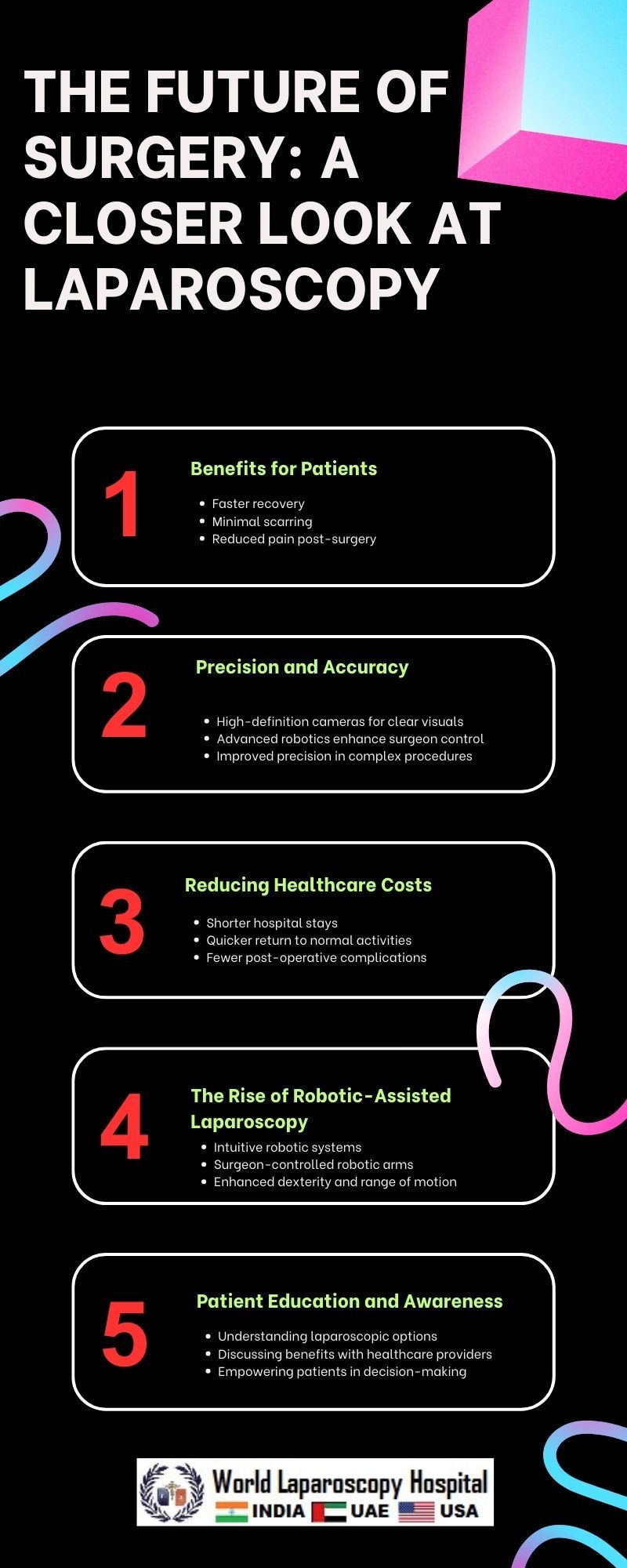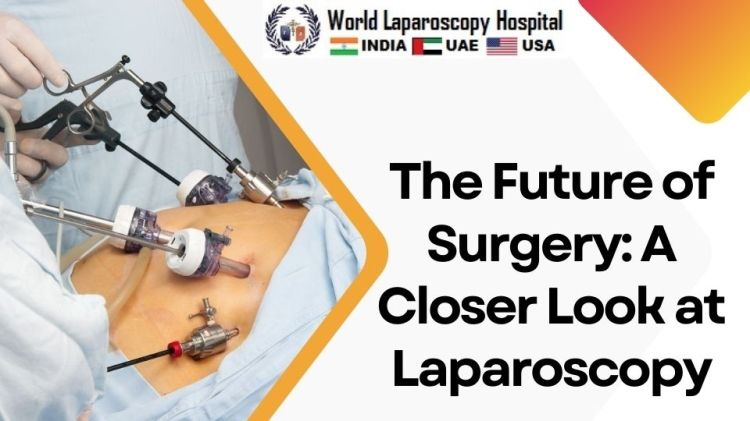The Future of Surgery: A Closer Look at Laparoscopy
Introduction
In the ever-evolving landscape of healthcare, surgical procedures have undergone a remarkable transformation, with technological advancements propelling the field into a new era. One such breakthrough that stands out is laparoscopy, a minimally invasive surgical technique that has been gaining widespread acceptance and reshaping the way surgeries are performed. This article delves into the intricacies of laparoscopy, exploring its history, current applications, and the promising future it holds for both medical professionals and patients.

Understanding Laparoscopy: A Historical Perspective
Laparoscopy, derived from the Greek words 'lapara' (flank) and 'skopein' (to see), involves the use of a specialized camera and instruments inserted through small incisions to perform surgical procedures. The roots of laparoscopy can be traced back to the early 20th century when the first attempts at minimally invasive abdominal surgeries were made. However, it was not until the 1980s that laparoscopy truly came into its own with the advent of modern technology and specialized equipment.
The Evolution of Laparoscopic Techniques
The initial applications of laparoscopy were limited to diagnostic purposes, allowing surgeons to visualize the abdominal cavity without resorting to open surgery. As technology advanced, so did the scope of laparoscopic procedures. Surgeons began performing more complex surgeries, including gallbladder removal, appendectomies, and hernia repairs, with smaller incisions and reduced trauma to the patient.
One of the key breakthroughs in laparoscopic surgery was the development of advanced robotic systems, enabling surgeons to perform intricate procedures with enhanced precision and control. These robotic-assisted laparoscopic surgeries have become increasingly common in specialties such as urology, gynecology, and colorectal surgery.
Current Applications of Laparoscopy
Laparoscopy has expanded its reach across various medical disciplines, offering benefits such as reduced pain, shorter hospital stays, and quicker recovery times. In gynecology, laparoscopic techniques are widely employed for procedures like hysterectomies, ovarian cyst removal, and tubal ligations. In urology, conditions such as prostate cancer and kidney disorders are increasingly treated through laparoscopic approaches.
In the field of general surgery, laparoscopy has become the standard of care for numerous procedures, including cholecystectomy (gallbladder removal), appendectomy, and gastric bypass surgery. The versatility of laparoscopic techniques has also led to their adoption in specialized surgeries like bariatric procedures for weight loss and organ resections for cancer treatment.
Advantages of Laparoscopic Surgery
The shift toward laparoscopy is driven by the myriad advantages it offers over traditional open surgery. Key benefits include:
Reduced Trauma and Scarring:
The use of small incisions minimizes tissue damage and scarring, leading to improved cosmetic outcomes and reduced postoperative pain.
Faster Recovery Times:
Patients undergoing laparoscopic procedures often experience shorter hospital stays and quicker recovery times compared to those undergoing open surgery.
Lower Infection Rates:
Smaller incisions result in a lower risk of postoperative infections, contributing to overall better patient outcomes.
Enhanced Visualization:
High-definition cameras provide surgeons with a detailed and magnified view of the surgical site, allowing for greater precision and accuracy.
Decreased Blood Loss:
The minimally invasive nature of laparoscopic surgery often results in less blood loss during procedures, reducing the need for blood transfusions.
Challenges and Limitations
While laparoscopy has revolutionized surgical practices, it is not without challenges. Some of the limitations include:
Steep Learning Curve:
Mastering laparoscopic techniques requires specialized training, and not all surgeons may be adept at performing these procedures.
Equipment Costs:
The initial investment in laparoscopic equipment, including specialized instruments and robotic systems, can be substantial, posing financial challenges for healthcare institutions.
Limited Tactile Feedback:
Surgeons may face difficulties in sensing tactile feedback during laparoscopic procedures, as they rely on visual cues rather than direct touch.
Patient Selection Criteria:
Not all patients are suitable candidates for laparoscopic surgery, depending on factors such as the complexity of the procedure and the patient's overall health.
The Future of Laparoscopy:
Technological Advancements
The future of surgery is intertwined with continuous technological advancements, and laparoscopy is no exception. Several trends and innovations are shaping the landscape of minimally invasive surgery, paving the way for more efficient and patient-friendly procedures.
Augmented Reality and Virtual Reality:
The integration of augmented reality (AR) and virtual reality (VR) technologies into laparoscopic surgery is enhancing surgeons' ability to visualize and manipulate anatomical structures. These immersive technologies provide real-time guidance, improving precision and reducing the learning curve for complex procedures.
Artificial Intelligence in Surgical Decision-Making:
The incorporation of artificial intelligence (AI) is transforming surgical decision-making. AI algorithms analyze preoperative data, assist in planning procedures, and even offer real-time guidance during surgery, optimizing outcomes and minimizing errors.
Miniaturized Instruments and Nanorobotics:
Ongoing research in miniaturized instruments and nanorobotics aims to further reduce the invasiveness of laparoscopic procedures. These tiny robotic tools could offer enhanced maneuverability within the body, allowing for intricate surgeries with minimal disruption to surrounding tissues.
Telepresence Surgery:
Advancements in telecommunication technologies are paving the way for telepresence surgery, where expert surgeons can remotely control robotic systems to perform surgeries in distant locations. This has the potential to address healthcare disparities by providing access to specialized surgical expertise globally.
Biocompatible Materials and 3D Printing:
The development of biocompatible materials and 3D printing technology is facilitating the creation of custom-designed surgical instruments and implants. These innovations enable personalized solutions for patients, improving the success rates of laparoscopic procedures.
Challenges on the Horizon
As the future of laparoscopy unfolds, certain challenges must be addressed to ensure the seamless integration of emerging technologies and practices:
Regulatory Frameworks and Ethical Considerations:
The rapid evolution of surgical technologies raises questions about regulatory frameworks and ethical considerations. Establishing guidelines for the ethical use of AI, telepresence surgery, and other innovations is crucial to maintain patient safety and uphold medical ethics.
Access to Advanced Technologies:
Ensuring widespread access to advanced laparoscopic technologies is essential for promoting equitable healthcare. Efforts must be made to bridge the gap between well-equipped urban centers and underserved rural or remote areas.
Training and Education:
With the introduction of new technologies, the training and education of surgeons become paramount. Developing comprehensive training programs that integrate virtual simulations and hands-on experience is crucial to prepare the next generation of surgeons for the future of laparoscopy.
Conclusion
Laparoscopy has emerged as a transformative force in the field of surgery, offering a less invasive and more patient-friendly alternative to traditional open procedures. As technology continues to advance, the future of laparoscopy holds exciting possibilities, from augmented reality guidance to the integration of artificial intelligence in surgical decision-making. While challenges exist, the potential benefits in terms of improved patient outcomes, reduced recovery times, and enhanced surgical precision make the ongoing evolution of laparoscopy a promising frontier in the realm of healthcare innovation. As we navigate the path ahead, the collaboration of healthcare professionals, researchers, and technology developers will be crucial in unlocking the full potential of laparoscopic surgery and revolutionizing the landscape of surgical care.






